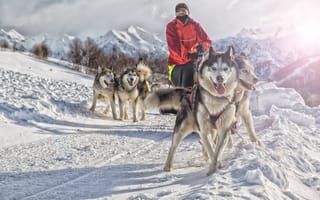
The University of Alaska Fairbanks and a team of drone experts are testing the delivery of emergency medical supplies and cargo across Alaska via unmanned aerial vehicles, Alaska Public Media reports.
“UAF recently announced an upcoming test to fly a package across Turnagain Arm from Indian to Hope, and while that package — a three-pound box of Q-tips, actually — is only one step toward those goals, it could eventually lead to major changes for Alaska communities off the road system,” says the outlet.
Alaska Public Media recently interviewed Cathy Cahill, director of the Alaska Center for Unmanned Aircraft Systems Integration about the pilot and what the center has in store.
Asked about why is drone technology only now being considered, Cahill cited regulations. “The military does this all the time in, you know, overseas and in their restricted areas, but it’s not something the FAA has been allowing commercial entities to do. So we’re helping develop the technologies and the regulations to avoid all manned and unmanned aircraft and to make sure that these missions are done safely,” she explained.
“If somebody is lost in the wilderness, we can, you know, find them, potentially drop an emergency response. We could, if somebody is in middle of nowhere and needs to have an EpiPen delivered, that we could use a small unmanned aircraft and get something in to that person in an area where you might not be able to land a large aircraft.”
Cahill went on to describe that the next steps, once the drones demonstrate their safety, is to get an air carrier certificate and the commercial permits needed to fly beyond the visual line of sight. She discussed plans to recreate the famed Serum Run, during which dog mushers delivered diphtheria serum to Nome in 1925, with drones as a PR stunt to get Alaskans about the potential of the technology.
“If somebody is lost in the wilderness, we can, you know, find them, potentially drop an emergency response. We could, if somebody is in middle of nowhere and needs to have an EpiPen delivered, that we could use a small unmanned aircraft and get something in to that person in an area where you might not be able to land a large aircraft,” Cahill told Alaska Public Media.






